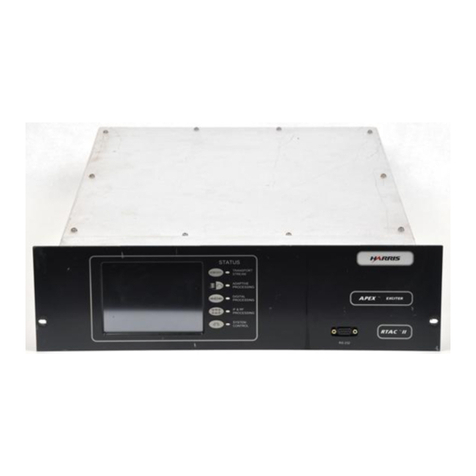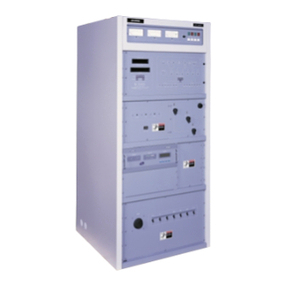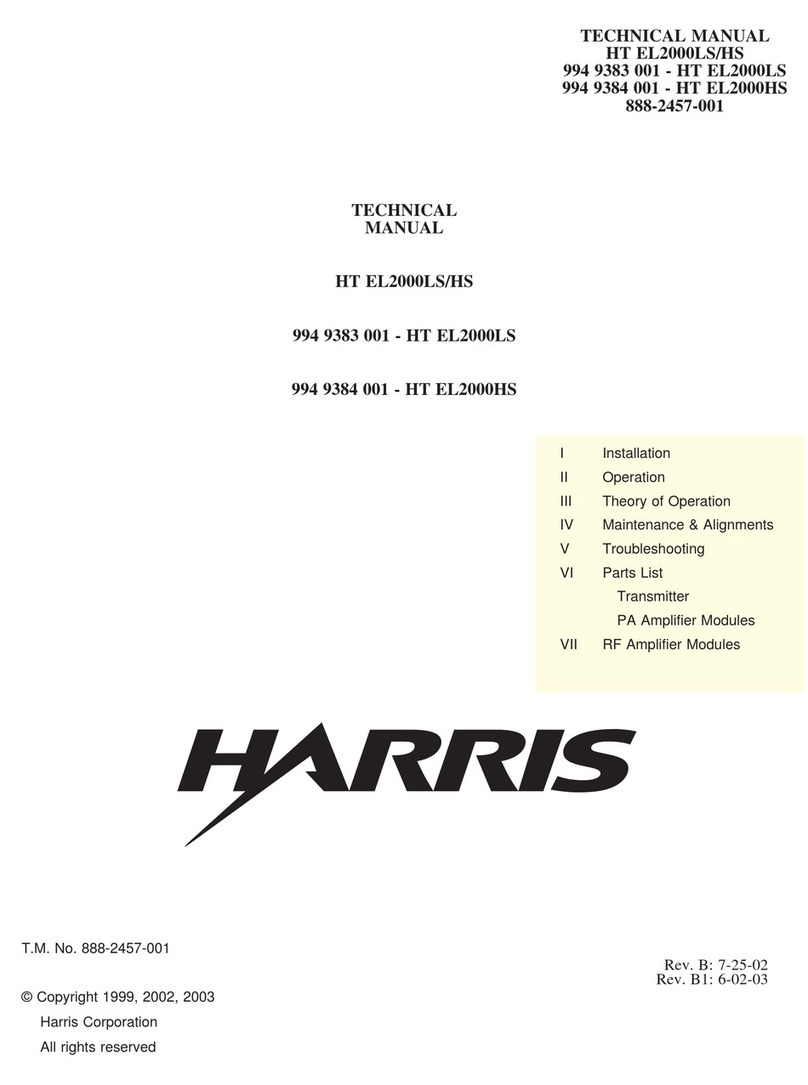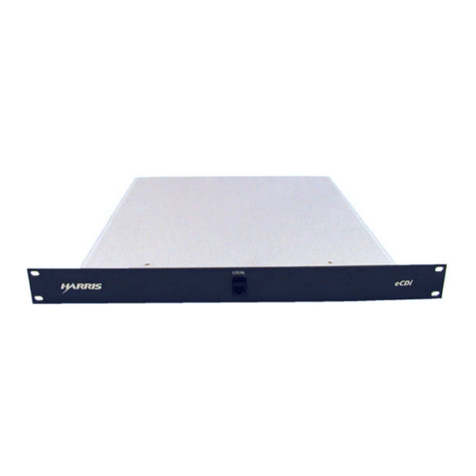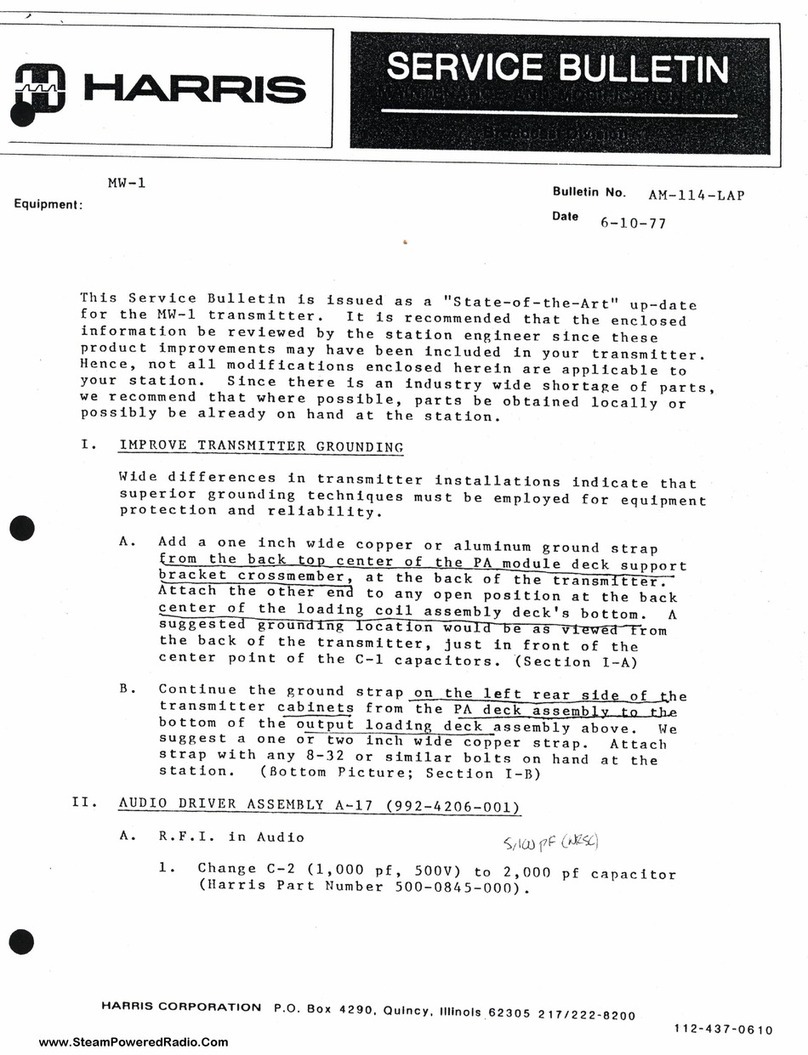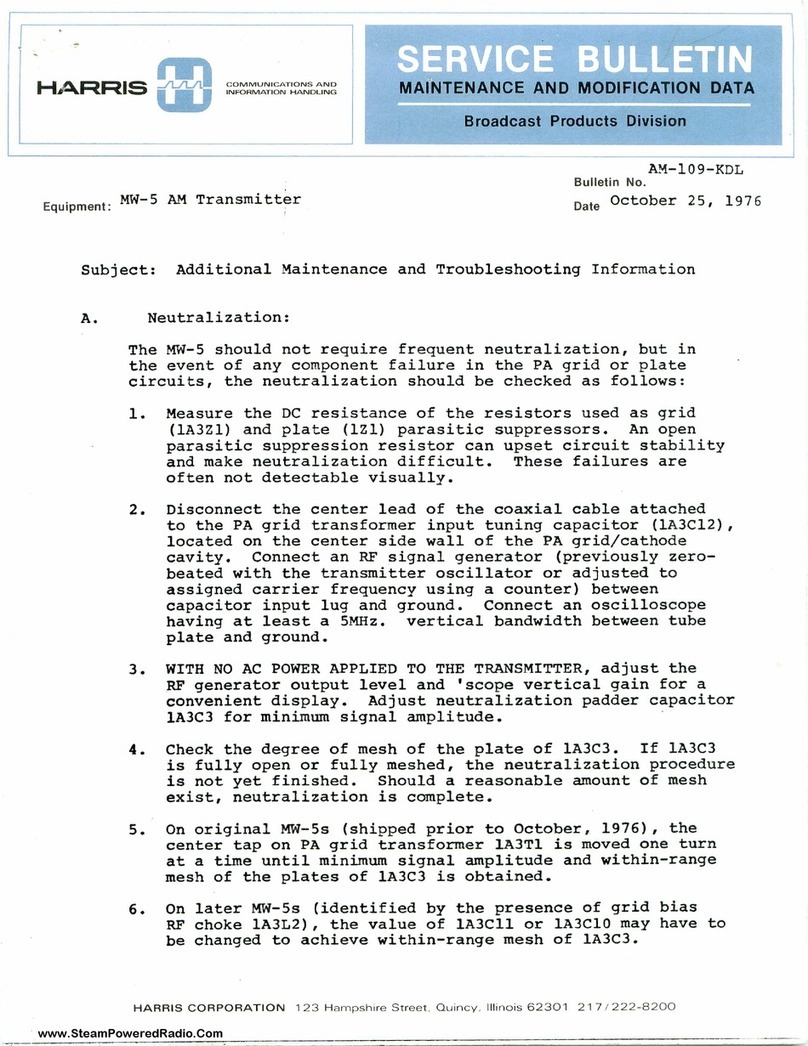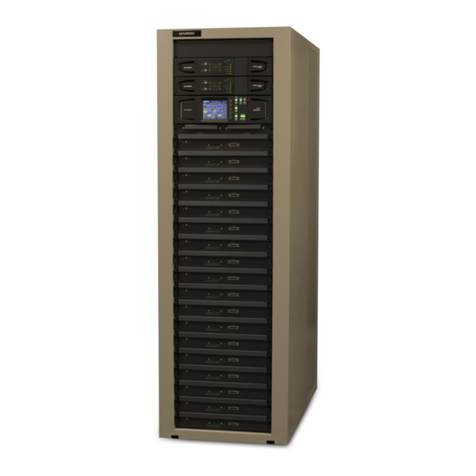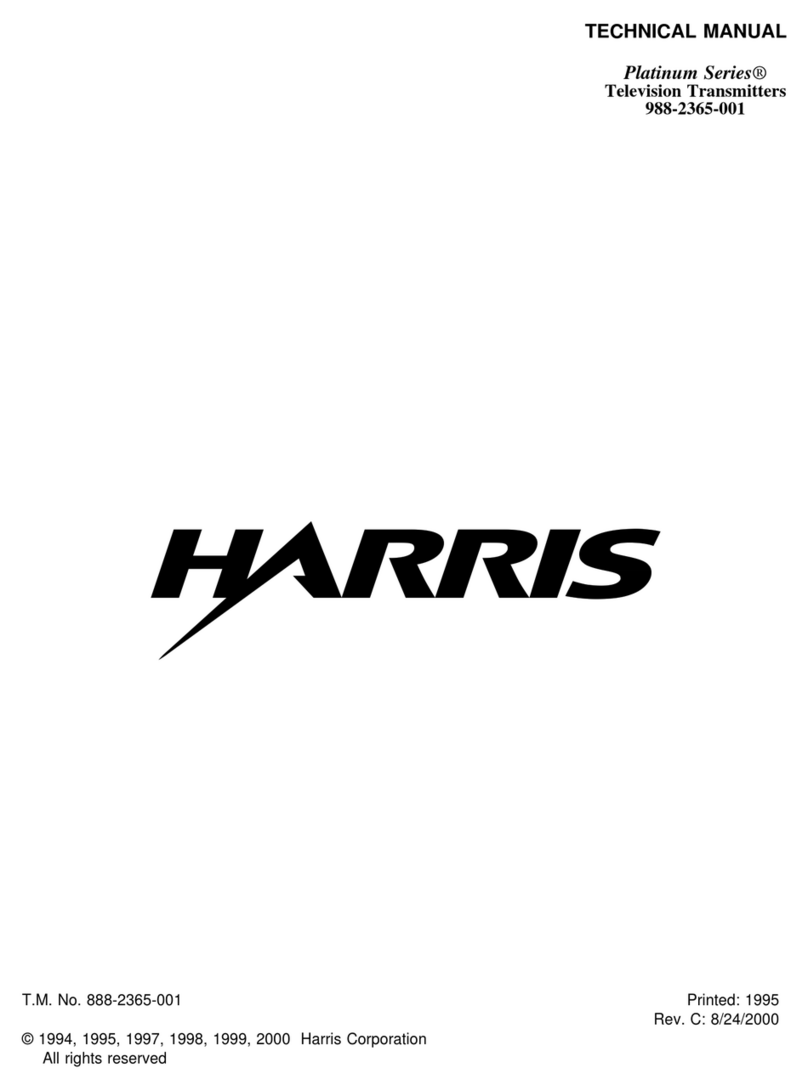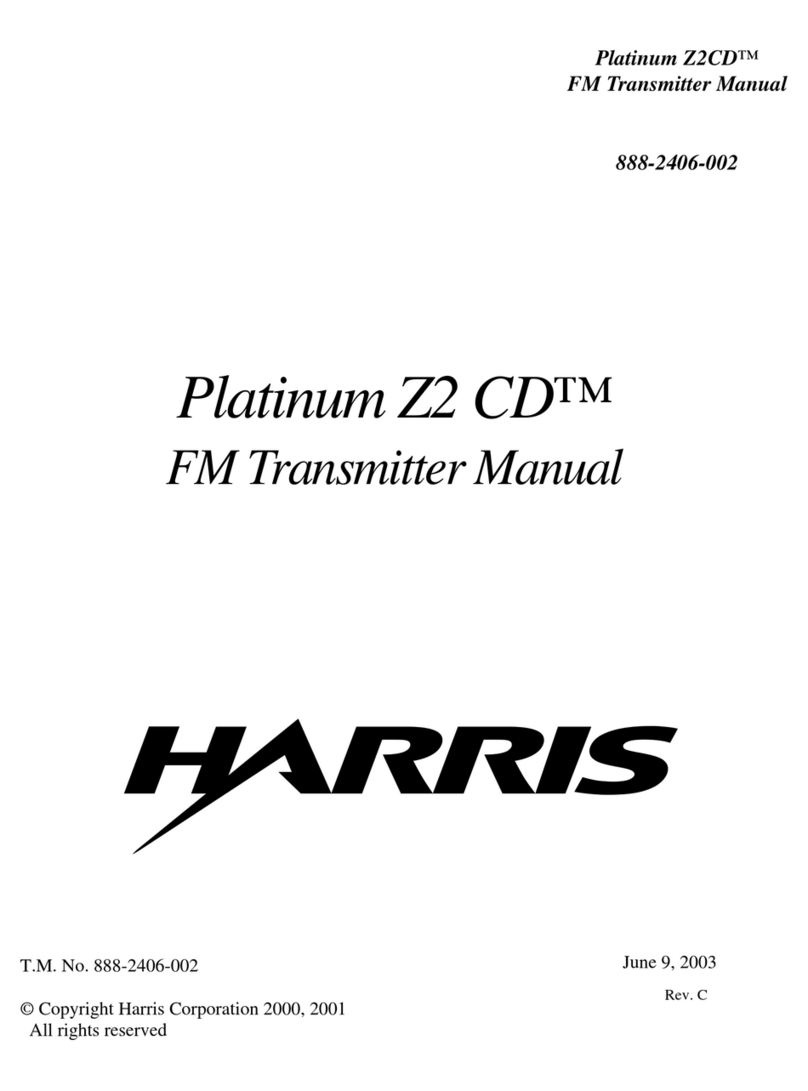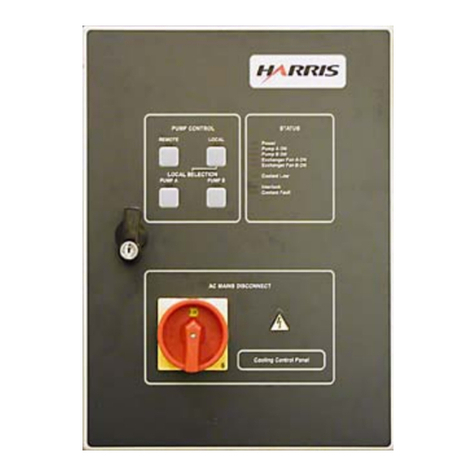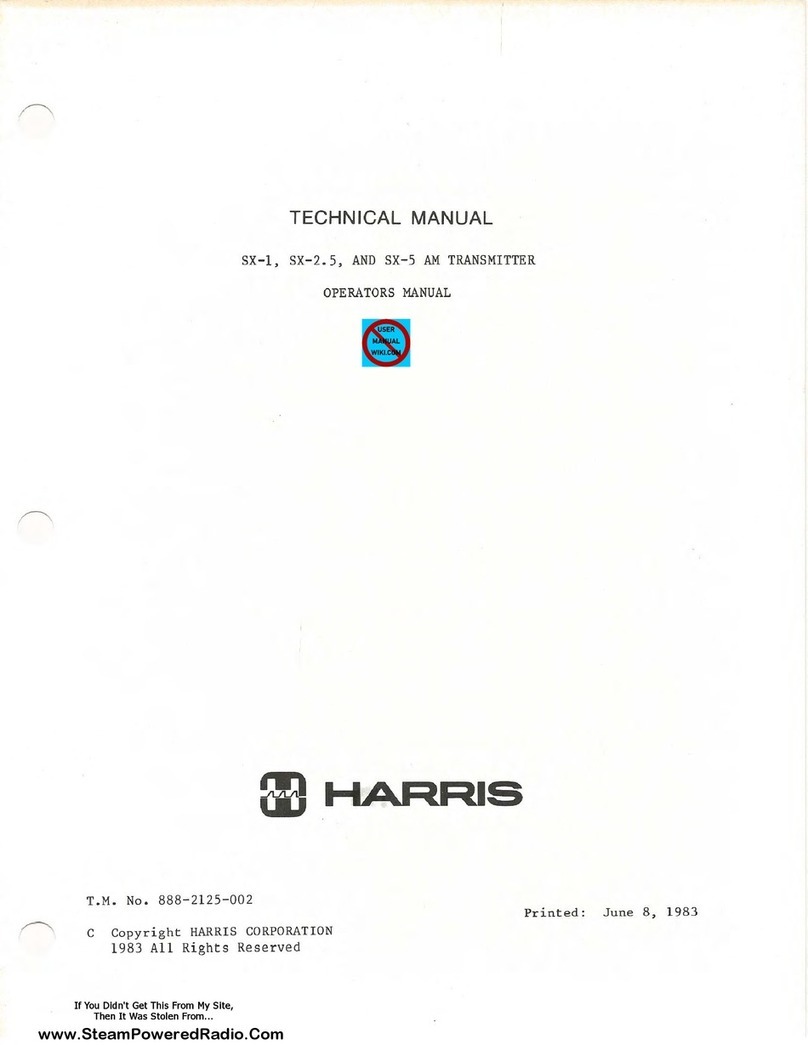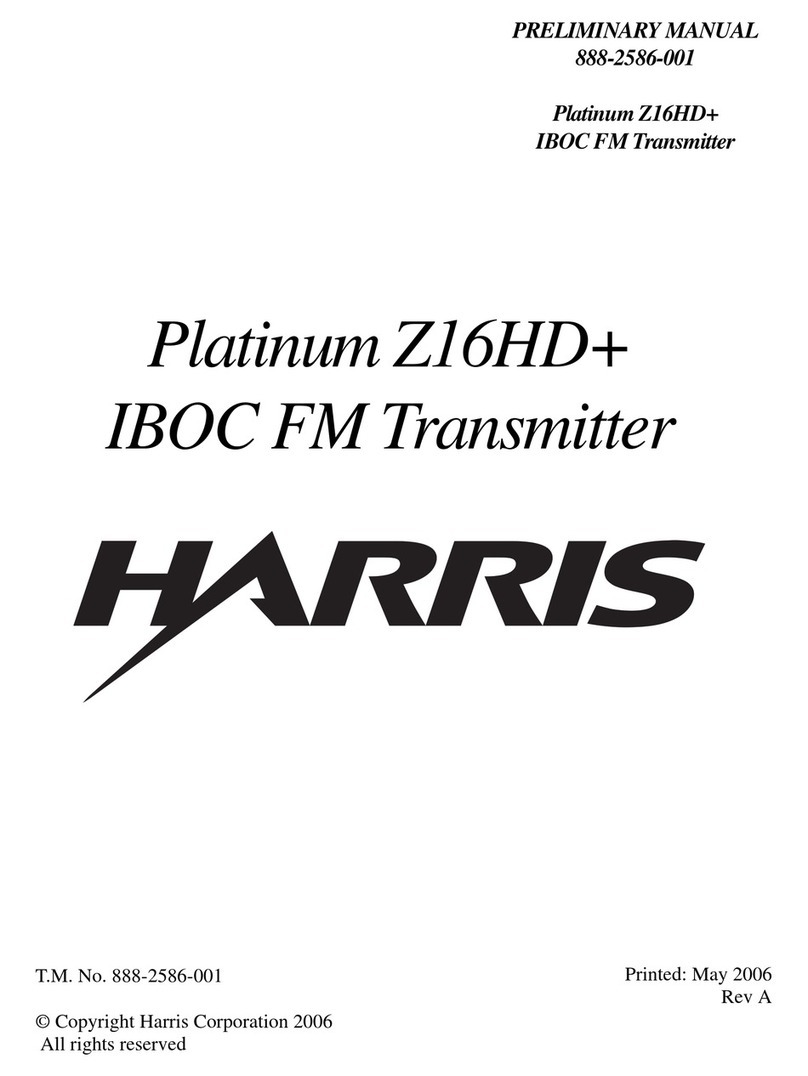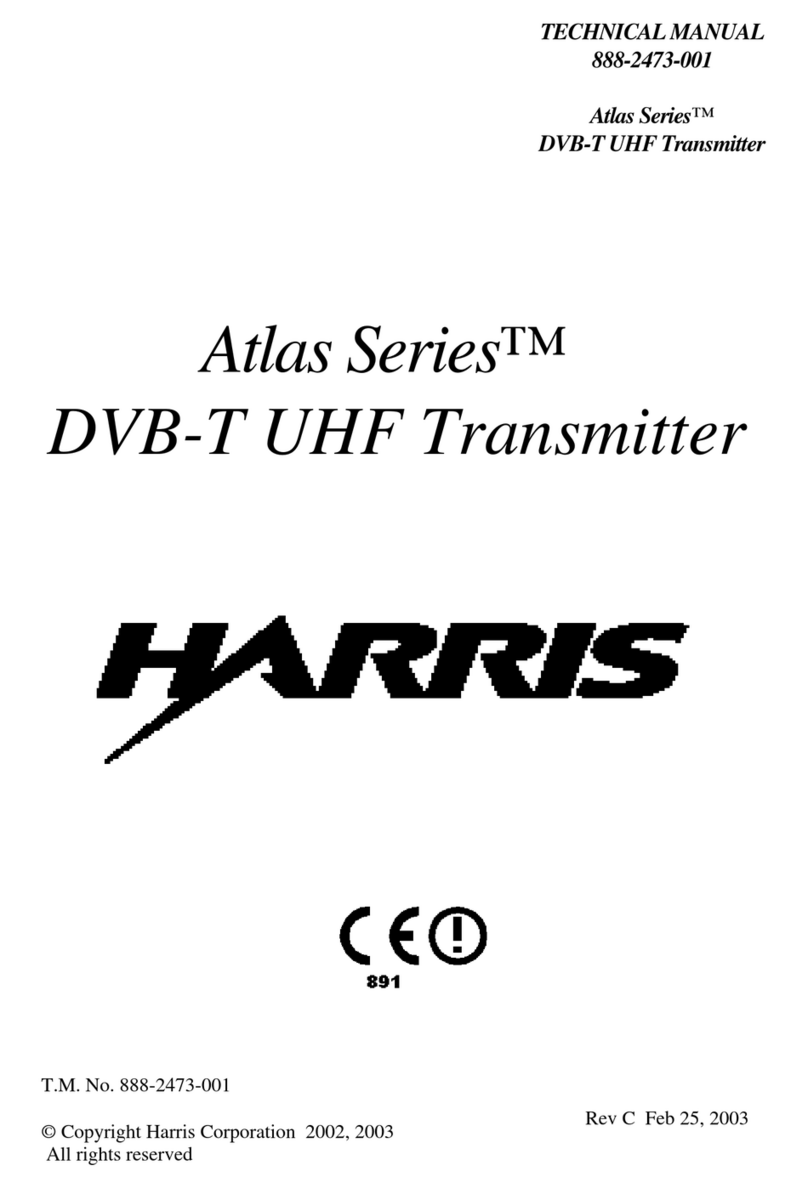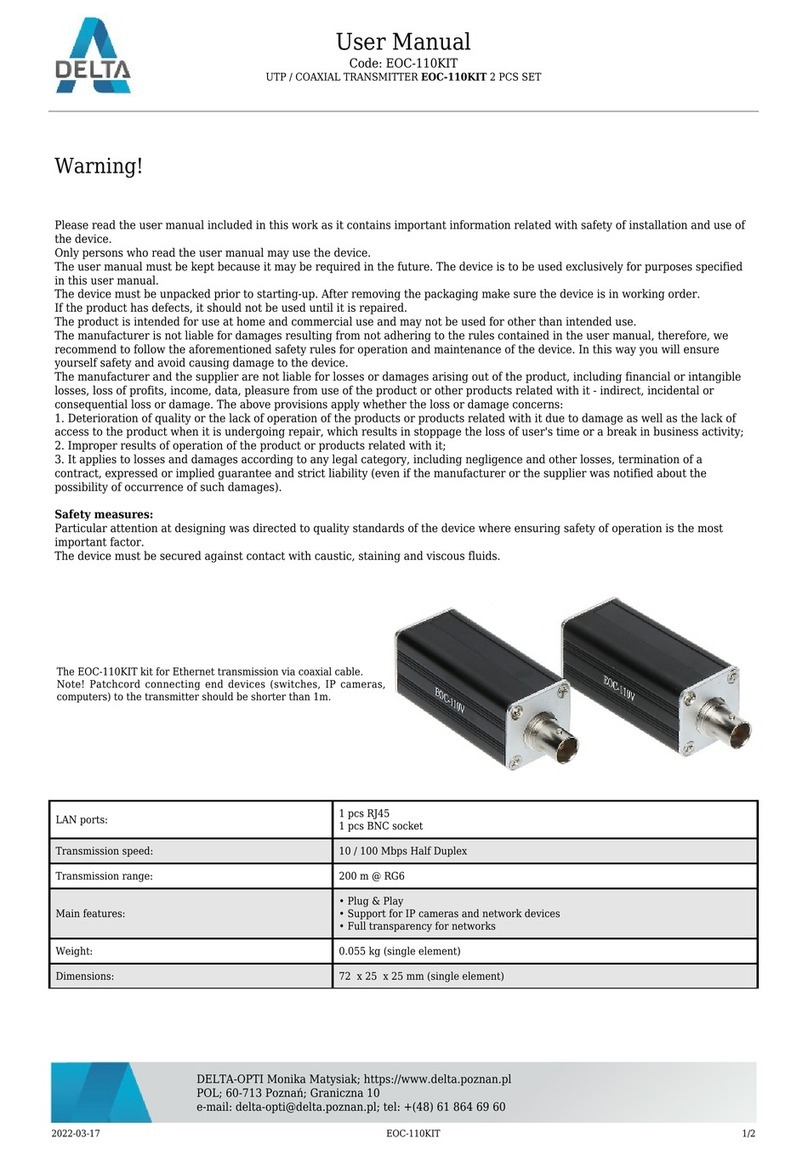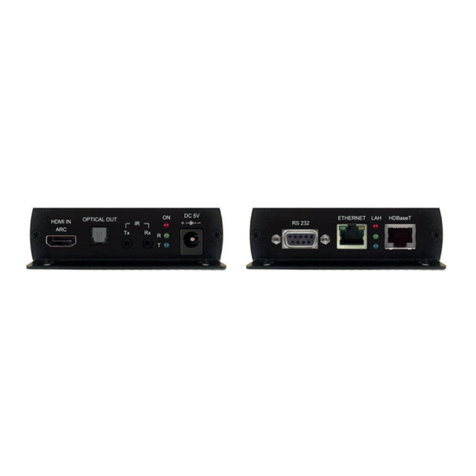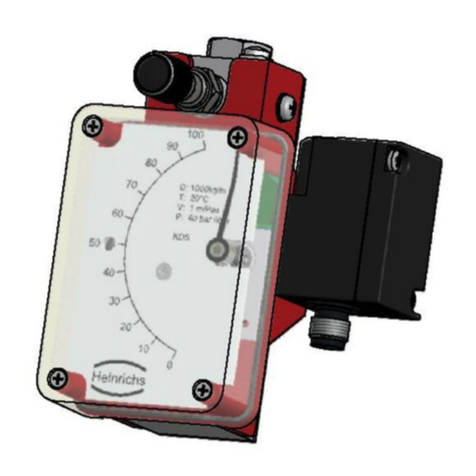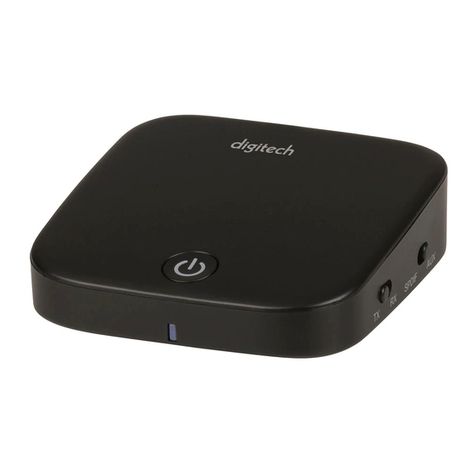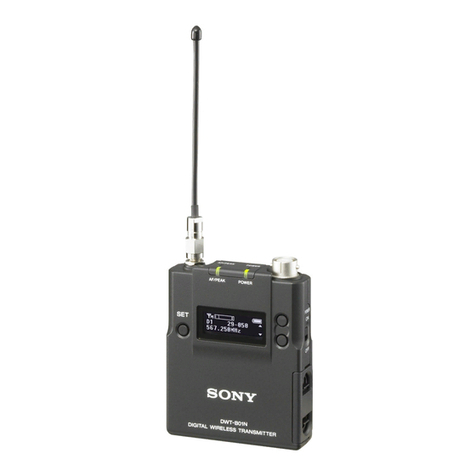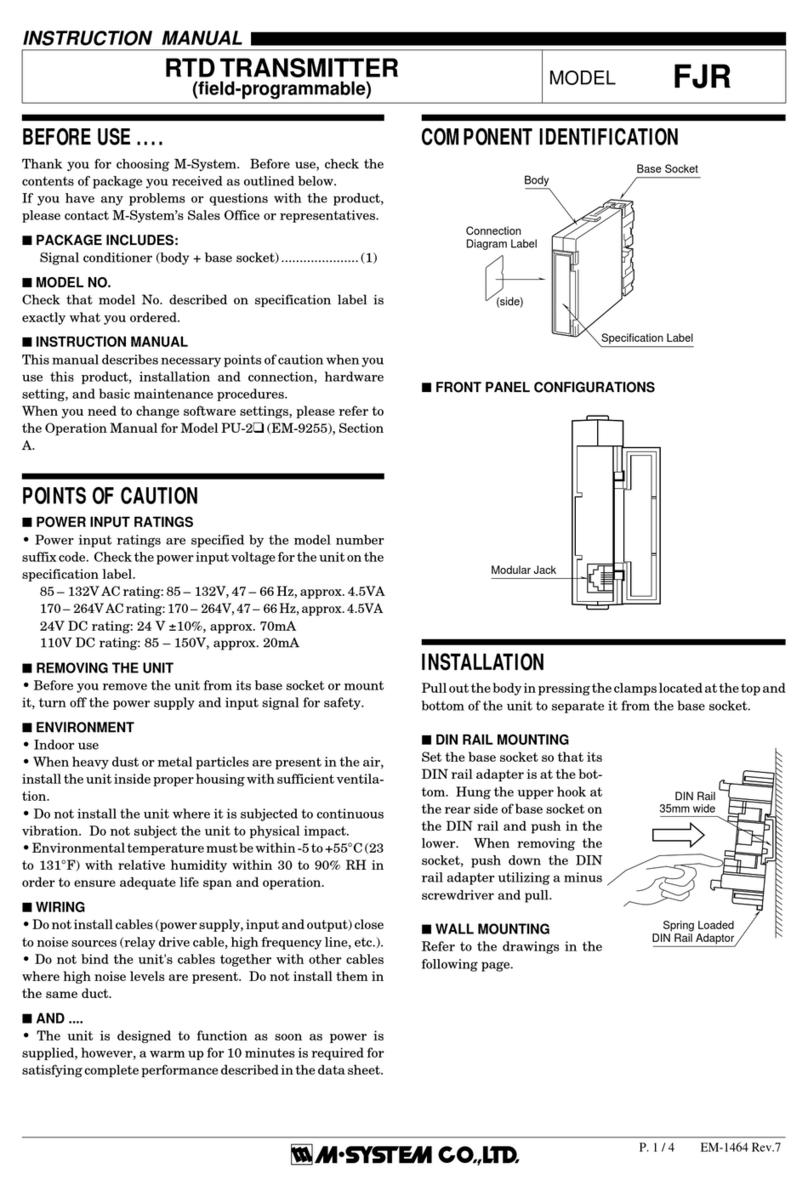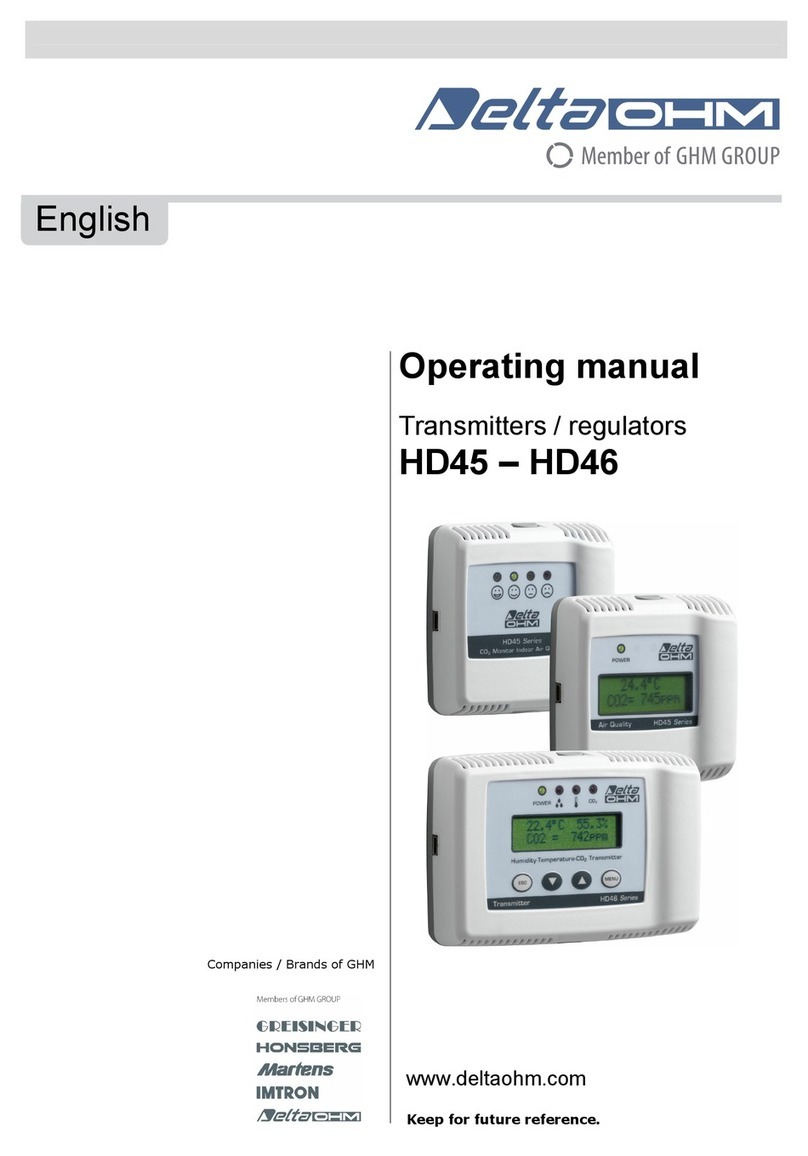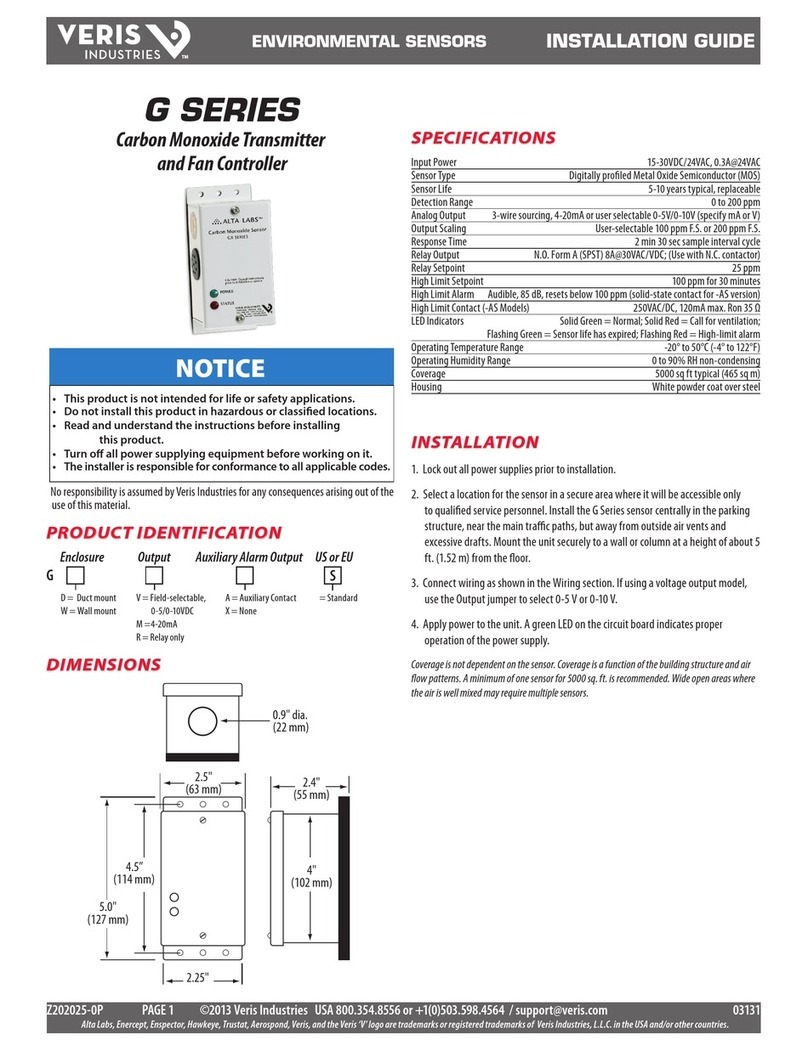
This is important due to numerous high
current connections in the transmitter.
Also check that all ribbon cables are prop-
erly locked into their respective printed cir-
cuit board connectors.
The mechanical interconnecting integrity
of the above mentioned items is essential to
the attaining of proper transmitter opera-
tion. Although appropriate packaging and
shipping precautions are taken prior to the
equipment leaving the factory, hardware
may, in isolated cases, work loose in transit
and result in a failure.
Check for debris or loose hardware, espe-
cially around the high current power supply
connections.
2.5.3. Equipment Positioning
Following removal of the shipping mate-
rial, move the cabinet on its skid as near as
possible to its permanent position. If ship-
ping bolts have been used, they will be
locatedateachcorneroftheskid.Remove
the bolts from the underside of the skid.
NOTE
Positioning of the cabinet is to be per-
formed by experienced personnel to pre-
vent damage to the equipment or injury
to personnel.
With a suitable lifting device, raise one
end of the transmitter cabinet sufficiently to
permit the placing of three lengths of circu-
lar bar stock under the cabinet. In this man-
ner the cabinet can be efficiently and
carefully rolled off the skid.
2.5.4. Ground Strap Installation
The importance of a good grounding sys-
tem and lightning protection can hardly be
overemphasized for reasons of personnel
safety, protection of the equipment, and
equipment performance. The following is
only a brief overview.
Lightning and transient energy via the
powerlineortowerconnectionscanimpose
serious threats to your personal safety as
well as damage the equipment. For these
reasons you should have a good protective
earthing system to divert these forms of
energytoearthground.Propergroundingof
the equipmentalso guardsagainst electrical
shock hazards that would exist if the equip-
ment failed in a way which put a hazardous
voltage on the chassis.
A good grounding system should include
substantial grounding at the tower base us-
ing copper groundrods and/or a buried cop-
per ground screen, with copper strap used
to connect the tower base to earth ground.
A low impedance will help carry lightning
current directly into the ground instead of
into your building. Additionally, coax
shield(s)shouldbeelectricallyconnectedto
and exit the tower as near to the bottom as
practical to minimize the lightning voltage
potential carried by the coax into your
building.
For coaxes, a single point of entry into the
building is best, with all connected to a
common grounding plate (or bulkhead
panel) having a low impedance connection
tothebuildingperimeterground.Widecop-
per straps should be used for making the
connection from the common grounding
plate to earth ground.
Acommongroundingplateisalsothebest
locationforcoaxialsurgeprotectorsforsen-
sitive equipment such as an STL receiver.
Ideally, this plate should also be the entry
point for all signal lines, and serve as a
single point ground for AC power surge
protection.
A good ground system should include pe-
rimeter grounding of the transmitter build-
ing using copper ground rods and copper
strap. There should also be a copper strap
running from tower ground to the building
perimeter ground.
Good grounding and shielding will help
keep stray RF current to a minimum. RF
interference usually shows up in one of
several ways, intermittent problems with
digital or remote control circuits, audio
feedback or high pitched noise. Even a
smallamountofnon-shieldedwiremakesa
very efficient antenna for RF and transient
energy. If RF is allowed into the audio
equipment,itcanberectifiedandmay show
up as noise or feedback. Wire and cable
shields should normally be connected at
both ends to the equipment chassis.
Agroundstrapattachmentpointislocated
on the bottom, right rear, of the cabinet
behind the dust cover (uses a 10-32 brass
screw with brass washer). Use this connec-
tionwhen utilizinga singlepointgrounding
system, attaching your ground strap to the
common grounding plate. See 839-7920-
044 Gates series Outline drawing.
A grounding stud is also provided near the
AC input connections in the lower portion
of the transmitter. Use this connection for
the power line ground. It is located under
the low voltage power supply board.
2.6. Electrical Installation
NOTE
All GATES Series™ transmitters are
shipped with A19T1 and A20T1 con-
nected for 251 VAC operation. It is ad-
vised that the end user determine the ap-
propriate tap settings during the initial
turn-on. In this procedure, the trans-
former tapping is determined by the re-
sulting DC supply voltage. This ensures
that the DC supplies are operated in the
desired range.
2.6.1. Power Requirements
The GATES Series™GATES FIVE (3
phase version) is designed to operate from
a3phase,208/240VAC,50to60Hzsource.
Sixty ampere service is required. Use 6
gauge wire for this connection.
The single phase GATES FIVE requires a
100 amp 208/240 VAC, 50 to60 Hz source.
Use 4 gauge wire for this connection.
The GATES TWO requires a 60 amp
208/240 VAC, 50 to 60 Hz source. Use 6
gauge wire for this connection.
The GATES ONE requires a 30 amp
208/240 VAC, 50 to 60 Hz source. Use 8
gauge wire for this connection.
There is no requirement for 120 VAC in
any case.
As an option, the low voltage circuits can
be powered from a separate circuit breaker.
Although not a requirement, this set up some-
times is advantageous for maintenance and
troubleshooting. If you choose to wire your
transmitter this way, you will need to provide
a separate 10 amp circuit breaker.
NOTE
If service voltage is less than 208 VAC,
a higher current service may be needed.
Refer to the Outline drawing for mechani-
cal dimensions and wire feed locations.
WARNING
ENSURE THAT ALL AC POWER IS OFF
PRIOR TO STARTING THE FOLLOWING
INSTALLATION
2.6.1.1. Procedure.
For a three phase GATES FIVE, connect 3
phaseACinputpowerfromafuseddisconnect
box or circuit breaker to transmitter cabinet
terminal board TB1 terminals 1, 2 and 3. The
powersource can be either a closed delta (usu-
ally 230 to 240 volts) or a WYE (usually 208).
For a four wire WYE system (341 to 434
volts), connect the neutral wire to terminal
board TB1 terminal 4. Also for a WYE
system ensure that the high voltage trans-
former has been tapped correctly for the
configuration (see the Wiring Diagram for
the three phase GATES FIVE transmitter).
For the GATES ONE, GATES TWO, or
single phaseGATES FIVE, connect ACinput
power (197 to 251 VAC)from a fused discon-
nect box or circuit breaker to transmitter cabi-
net terminal board TB1 terminals 1 and 2.
NOTE
Terminal board TB1 is accessed by remov-
ing the four screws which hold the circuit
breaker panel to the front of the transmit-
Rev. AC: 2/29/00 888-2314-001 2-3
WARNING: Disconnect primary power prior to servicing.




















